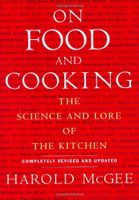Advertisement
Traditional Bread Ovens
By Harold McGee
Published 2004
Until the middle of the 19th century, bread was baked in clay, stone, or brick ovens that were preheated by a wood fire, and that could store a large amount of heat energy. The baker started the fire on the floor of the oven, let it burn for hours, cleaned out the ashes, and then introduced the loaves of dough and closed the oven door. The oven surfaces start out at 700–900°F/350–450°C, the domed roof radiating its stored heat from above, the floor conducting heat directly into the loaves from beneath. As the dough heats it releases steam, which fills the closed chamber and further speeds the transfer of heat to the loaves. Slowly the oven surfaces lose their heat, and the temperature declines during the bake, at the same time that the loaf is browning and therefore becoming more efficient at absorbing heat. The result is a rapid initial heating that encourages the dough to expand, and temperatures high enough to dry the crust well and generate the color and flavors of the browning reactions.


